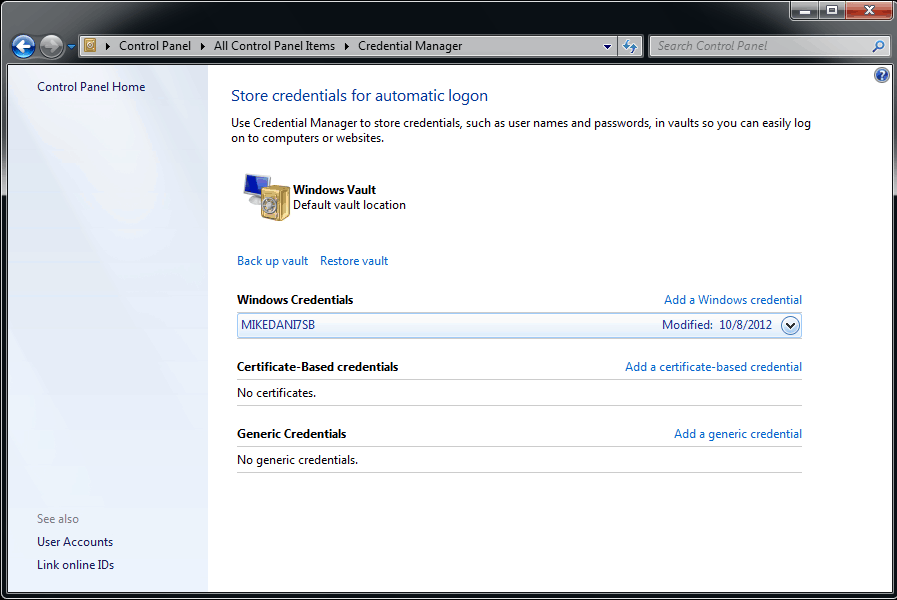
Open the Windows Control Panel by searching for it in the Start Menu.Īlternatively, you can manage credentials in Windows Credential Manager using the command line interface.To access and manage credentials in Windows Credential Manager, follow these steps: How to Access and Manage Credentials in Windows Credential Manager Still, it’s free, pre-installed, and designed to be part of the operating system. Windows credentials manager may not be as elaborate or feature-rich as third-party alternatives such as LastPass or 1Password. It integrates seamlessly with Windows, making it a convenient and reliable option for managing login credentials on a Windows computer.Users can also back up and restore credentials. It allows users to manage and update their stored login credentials easily.This reduces the risk of password-related security breaches, such as password cracking or phishing attacks.

It improves security by securely storing login credentials in an encrypted vault, protecting them from unauthorized access.This eliminates the need for the user to remember and manually enter their username and password. It saves time and effort by automatically filling in login credentials for network resources, websites, and applications that the user has previously logged in to.There are several benefits to using Windows Credential Manager, including:


 0 kommentar(er)
0 kommentar(er)
